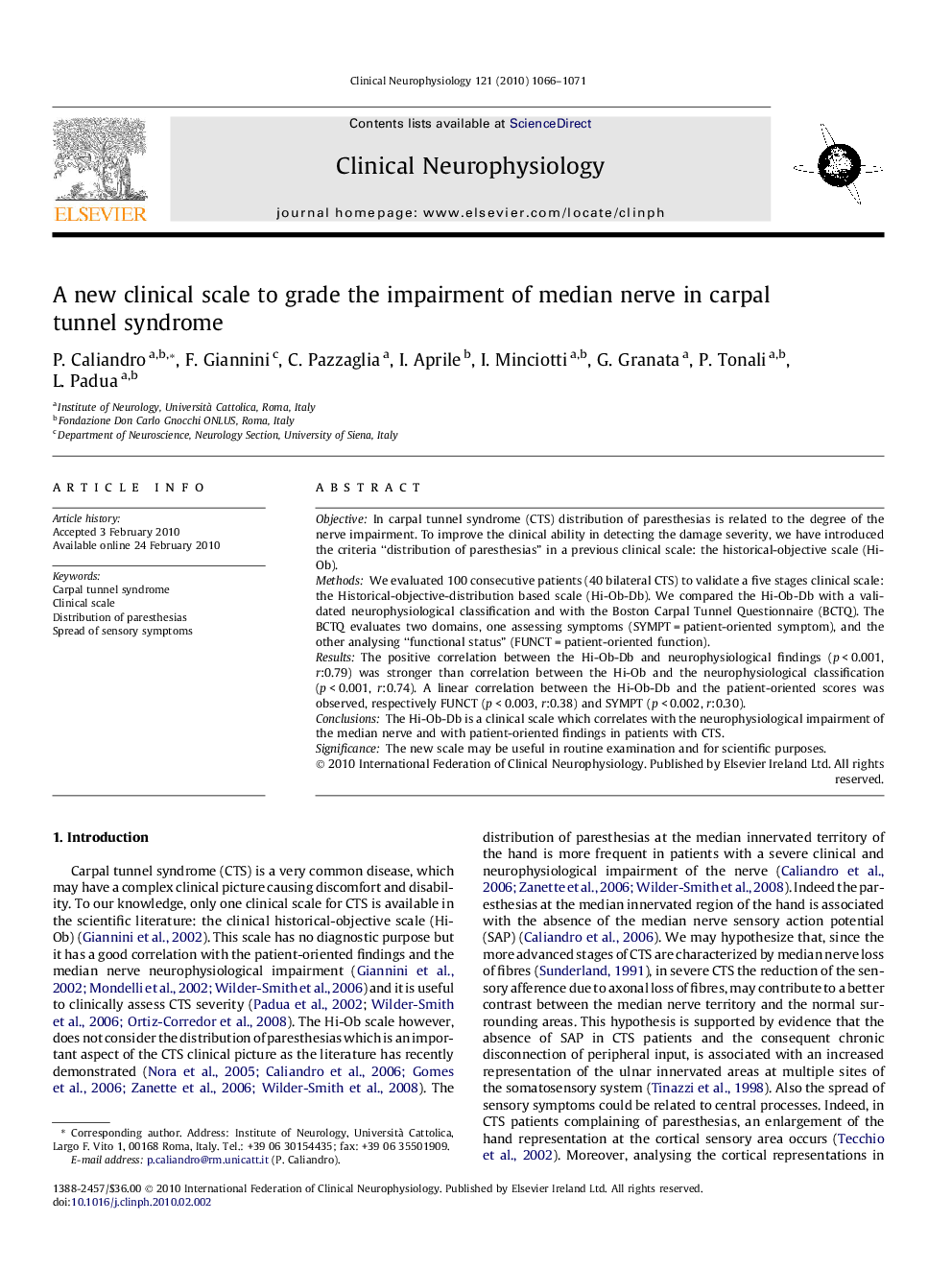| Article ID | Journal | Published Year | Pages | File Type |
|---|---|---|---|---|
| 3045930 | Clinical Neurophysiology | 2010 | 6 Pages |
ObjectiveIn carpal tunnel syndrome (CTS) distribution of paresthesias is related to the degree of the nerve impairment. To improve the clinical ability in detecting the damage severity, we have introduced the criteria “distribution of paresthesias” in a previous clinical scale: the historical-objective scale (Hi-Ob).MethodsWe evaluated 100 consecutive patients (40 bilateral CTS) to validate a five stages clinical scale: the Historical-objective-distribution based scale (Hi-Ob-Db). We compared the Hi-Ob-Db with a validated neurophysiological classification and with the Boston Carpal Tunnel Questionnaire (BCTQ). The BCTQ evaluates two domains, one assessing symptoms (SYMPT = patient-oriented symptom), and the other analysing “functional status” (FUNCT = patient-oriented function).ResultsThe positive correlation between the Hi-Ob-Db and neurophysiological findings (p < 0.001, r:0.79) was stronger than correlation between the Hi-Ob and the neurophysiological classification (p < 0.001, r:0.74). A linear correlation between the Hi-Ob-Db and the patient-oriented scores was observed, respectively FUNCT (p < 0.003, r:0.38) and SYMPT (p < 0.002, r:0.30).ConclusionsThe Hi-Ob-Db is a clinical scale which correlates with the neurophysiological impairment of the median nerve and with patient-oriented findings in patients with CTS.SignificanceThe new scale may be useful in routine examination and for scientific purposes.
